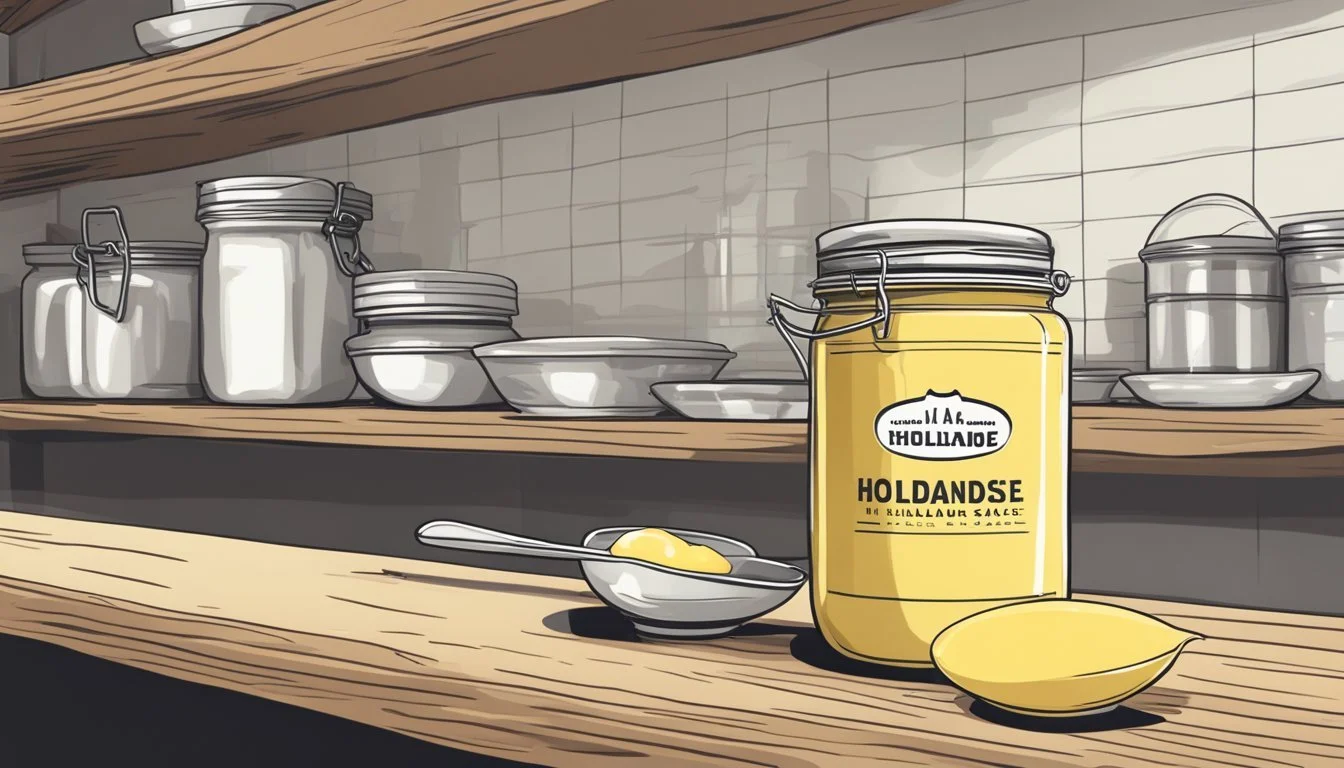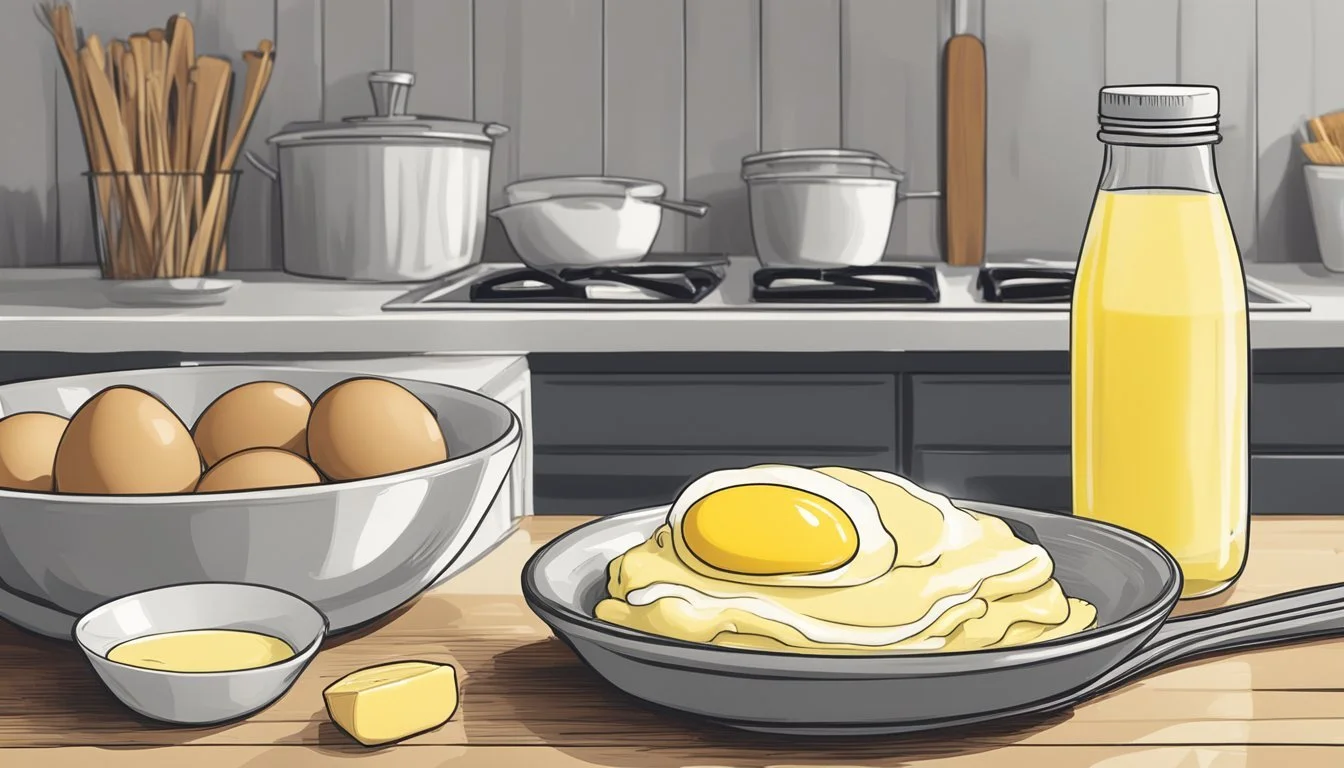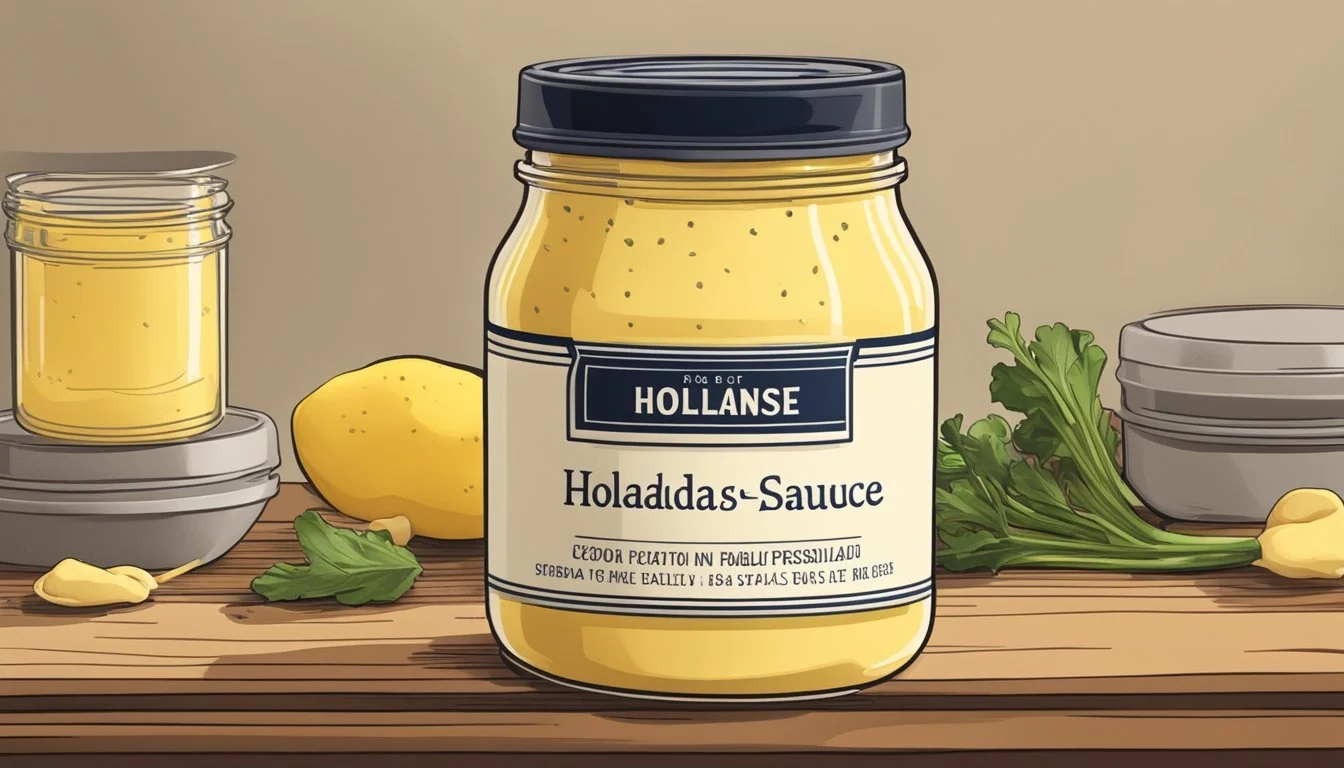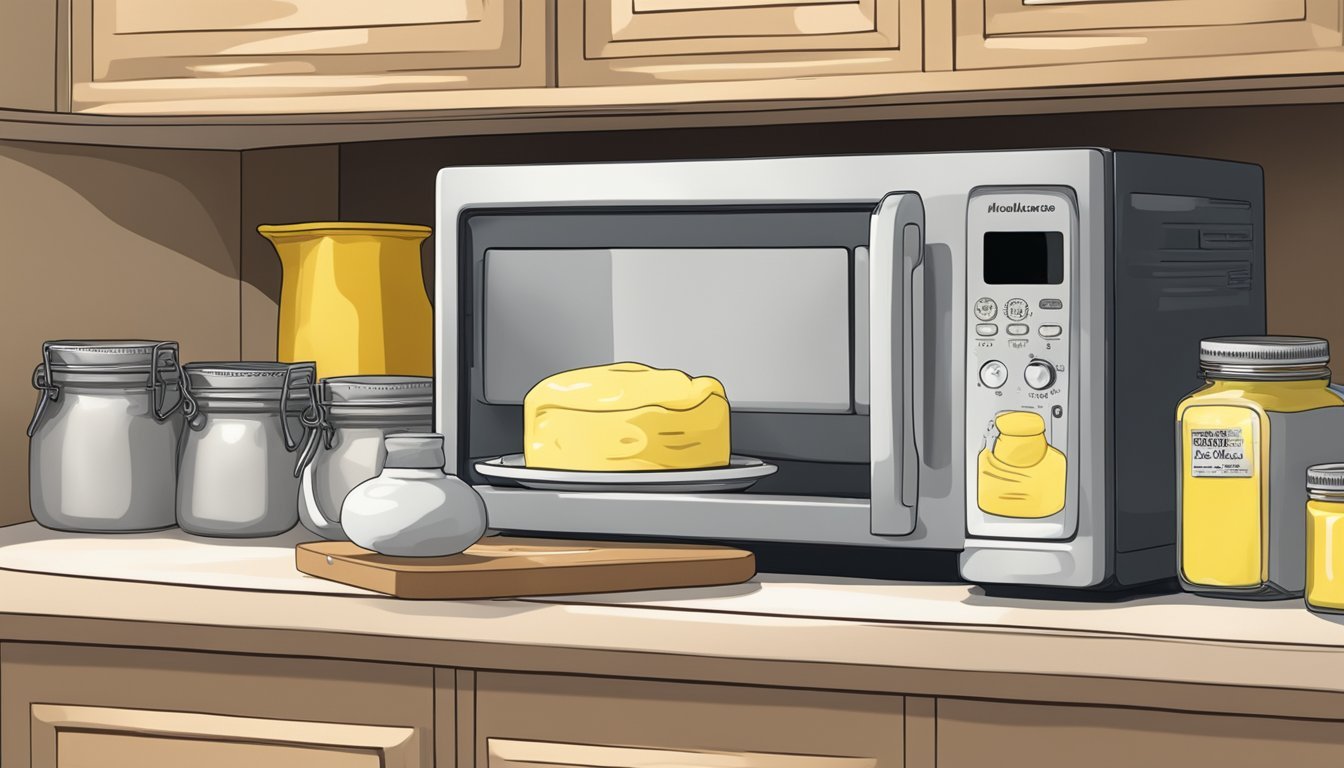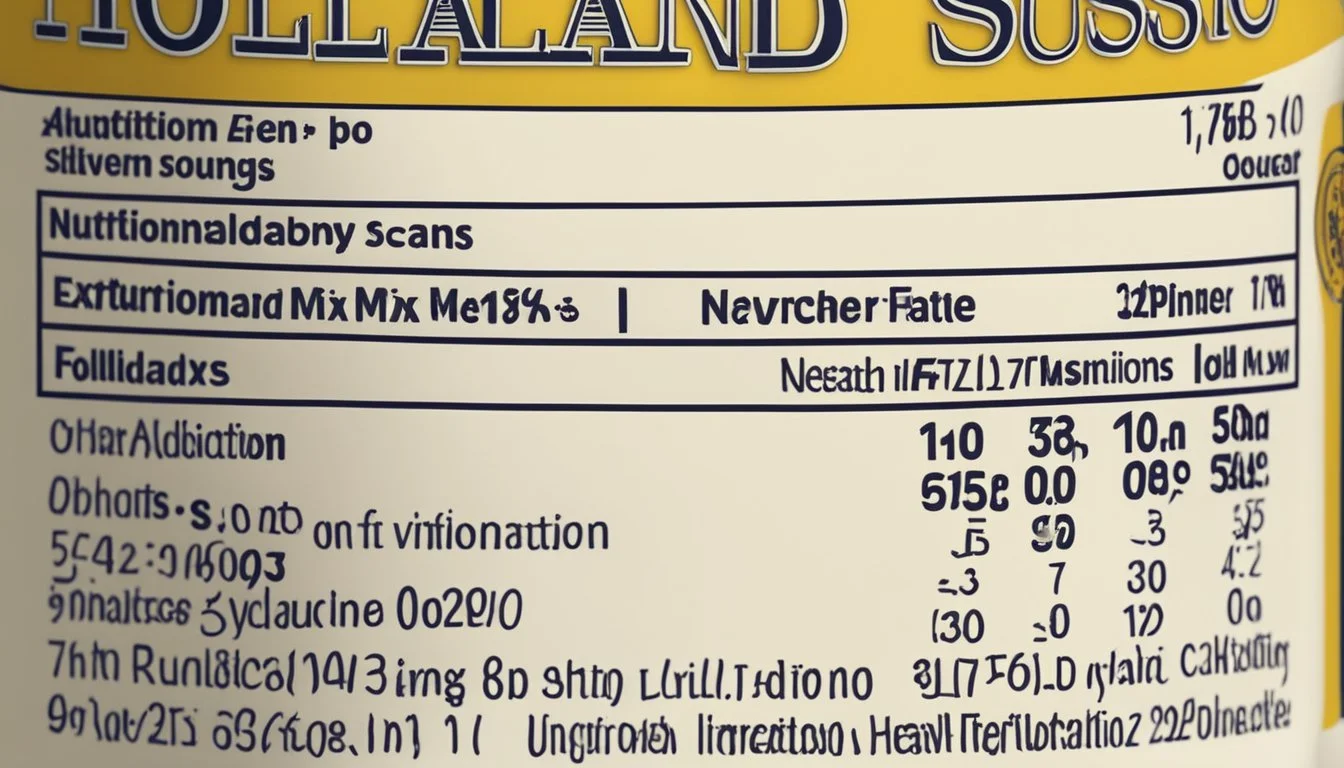How Long Does Hollandaise Sauce Mix Last?
Shelf Life and Storage Tips
Hollandaise sauce, a cornerstone of French cuisine, is known for its rich, buttery flavor and smooth texture. This emulsified sauce, combining egg yolks, melted butter, and lemon juice, often features in a variety of dishes from eggs Benedict to vegetables and meats, elevating the taste experience. Given its ingredients, the longevity
Understanding Hollandaise Sauce
Hollandaise sauce is a rich and creamy emulsion, primarily composed of butter, egg yolks, and lemon juice. It's celebrated for its smooth, velvety texture and balanced acidity that enhances a variety of dishes.
Composition and Flavor
Hollandaise sauce is an emulsion, which means it is a mixture of two ingredients that normally don't combine, such as oil and water. The base ingredients include:
Butter: Clarified butter is typically used for its ability to emulsify well with the other ingredients and for its rich flavor.
Egg yolks: They act as an emulsifying agent and contribute to the sauce's thickness and creaminess.
Lemon juice: It provides the necessary acidity to balance the richness of the butter and egg yolks.
When these components are whisked together over gentle heat, they create a stable emulsion with a smooth, satisfying flavor.
Variants and Uses
Hollandaise sauce is a versatile companion to many dishes. Some common uses include:
Eggs Benedict: A classic breakfast dish pairing the sauce with poached eggs and English muffins.
Vegetables: Asparagus (how long does asparagus last?) and other vegetables are often drizzled with Hollandaise to enhance their taste.
Fish and Seafood: The sauce pairs exceptionally well with fish and seafood, lending a delicate yet flavorful touch.
Variants of hollandaise sauce may include:
Béarnaise: Incorporates tarragon and shallots.
Mousseline: Lightened with whipped cream.
These variations adjust the flavor profile of the sauce, demonstrating its adaptability to different dishes and preferences.
Preparation and Freshness
In making hollandaise sauce, the emulsion's stability and the sauce's fresh character are crucial. Proper technique ensures a smooth, richly flavored sauce that is best served soon after preparation.
Creating the Perfect Emulsion
To craft Hollandaise sauce, one begins by carefully whisking together egg yolks, a tablespoon of water, and lemon juice over gentle heat. The gentle heat typically comes from a double boiler or a bowl set over a saucepan of simmering water to avoid scrambling the eggs. Whisking continuously is key to creating a stable emulsion as the mixture thickens and seamlessly incorporates melted butter. When done correctly, the sauce will have a thick consistency and a pale, creamy color.
Freshness Indicators
The freshness of Hollandaise sauce is primarily indicated by its color, consistency, and smell. A fresh batch has a smooth texture without any separation, a buttery, pale yellow hue, and a pleasant, slightly tangy aroma. Hollandaise should be consumed shortly after preparation, ideally within two hours if kept at room temperature, and can be refrigerated for a short period of time, noting that flavor and texture may suffer with prolonged storage.
Storing Hollandaise Sauce
Storing Hollandaise sauce properly is essential for maintaining its quality and extending its shelf life. Refrigeration and freezing are two common methods, with specific guidelines to preserve the sauce's consistency, color, and smell.
Refrigeration Guidelines
When refrigerating Hollandaise sauce, the temperature should be kept consistently below 40°F. The sauce should always be stored in an airtight container to prevent contamination and preserve its quality. Leftover Hollandaise sauce can be kept in the refrigerator for 2 to 7 days. Ensure the container is sealed tightly each time after use to minimize exposure to air.
Container: Airtight, clear container
Temperature: Below 40°F
Shelf Life: 2 to 7 days
Freezing Techniques
Freezing Hollandaise sauce is not generally recommended, as it can affect the emulsion's stability. However, if there is a need to freeze, divide the sauce into portions to avoid repeated freeze-thaw cycles. Store in an airtight container, clearly label with the date, and use within one month. Thaw in the refrigerator overnight, and be prepared to re-emulsify if the sauce separates.
Container: Airtight, labeled with date
Method: Freeze in small portions
Shelf Life: Up to 1 month
Usage and Reheating
When handling leftover Hollandaise sauce, one must employ careful reheating methods to maintain its creamy quality and prevent separation. Many use it as a delicate topping or dipping sauce, especially for steamed vegetables like asparagus post-reheating.
Proper Reheating Methods
To reheat Hollandaise sauce, gentle heat is essential. One recommended method is using the microwave at low power, warming in short 15-second intervals and stirring between each round until the desired temperature is reached. Alternatively, one can place the sauce in a bowl over a saucepan of simmering water, stirring constantly until it warms up. It's crucial to avoid high heat as it can cause the sauce to split.
Microwave Method: Heat in 15-second bursts, stirring in between.
Double Boiler Method: Heat over simmering water, stirring constantly.
Culinary Application After Storage
Hollandaise sauce, once stored and properly reheated, is versatile. It can enrich various dishes, such as by draping over warm, steamed asparagus or serving as a creamy dipping sauce for an array of cooked vegetables (how long do cooked vegetables last?). Its application after storage should aim to pair with items that complement its rich and smooth characteristics. To maximize the sauce's texture and flavor when reheating after storage, thawing in the refrigerator if previously frozen is essential before the reheating process.
Safety and Spoilage Considerations
When dealing with Hollandaise sauce, both homemade and commercially prepared, understanding the signs of spoilage and implementing food safety tips are critical to avoid foodborne illness. Spoilage can manifest in several ways, and preventing it requires proper storage and handling.
Spoilage Signs and Avoidance
Visual changes: One should look for any discolorations or mold growth. If the sauce appears yellowish-brown instead of its typical pale yellow, it may indicate spoilage.
Texture: The sauce should be creamy. If it becomes clumpy, lumpy, or separates, these are strong indicators that the sauce should not be consumed.
Smell: Any off or sour odors are a sign the sauce may have gone bad.
To avoid spoilage:
Refrigerate: Store hollandaise sauce in the refrigerator immediately after cooling and use within 1-2 days.
Temperature: Never leave homemade hollandaise sauce at room temperature for more than 2 hours; bacteria grow rapidly between 40°F and 140°F.
Food Safety Tips
Contamination: Always use clean utensils and avoid cross-contamination to prevent the introduction of harmful bacteria.
Curdling: If the sauce begins to curdle, it may indicate the presence of bacteria and the sauce should not be used.
Shelf Life: For commercial hollandaise sauce mix, adhere to the shelf life of 6 months after opening and store in a cool, dry place.
Food Poisoning: Prevent food poisoning like Salmonella by avoiding the consumption of sauces that show signs of spoilage or have been stored improperly.
It is essential to follow these guidelines to ensure the safety and enjoyment of hollandaise sauce.
Nutritional Information
The nutritional content of Hollandaise sauce is heavily influenced by its core ingredients, predominantly butter and egg yolks. These components contribute to the overall calorie, protein, fat, and carbohydrate content of the sauce. A typical serving size of homemade Hollandaise sauce can vary, but the general nutritional breakdown per tablespoon (approx. 15ml) can be assessed as follows:
Nutrient Amount Calories 70 kcal Total Fat 7g Saturated Fat 4g Cholesterol 55mg Protein 0.5g Total Carbohydrates 0.1g Sodium 65mg
Butter is a primary source of fat in Hollandaise, with a single tablespoon providing about 7 grams of total fat, which includes 4 grams of saturated fat. This is a significant proportion of the daily value, highlighting the sauce's richness.
The egg yolks contribute not only to the creamy texture but also to the protein and cholesterol content. Each yolk delivers protein and vitamins but also adds a considerable amount of cholesterol to the sauce.
Carbohydrates in Hollandaise sauce are minimal, with only a trace amount present, making it a low-carb option for those monitoring their carbohydrate intake.
While Hollandaise sauce does provide some nutritional value, it is best enjoyed in moderation due to its high levels of saturated fat and cholesterol. Individuals with dietary restrictions or health concerns should consider these factors when including Hollandaise sauce in their meals.
Advanced Hollandaise Techniques
Advanced techniques in preparing Hollandaise sauce can enhance the texture and flavor of the finished condiment. These methods revolve around alternative mixing approaches and ingredient enhancements.
The Blender Method
Ingredients:
Egg yolks
Lemon juice
Melted butter or ghee (how long does ghee last?)
Salt
Cayenne Pepper (optional)
The Blender Method offers a more foolproof approach to achieving the creamy consistency that Hollandaise is known for. Unlike the traditional whisked technique, which requires constant attention, the blender method is more consistent and requires less manual dexterity:
Preparation: Combine egg yolks, lemon juice, and seasonings in the blender.
Mixing: Blend these ingredients until smooth.
Emulsification: With the blender running, slowly pour in melted butter or ghee until the mixture thickens.
The key here is to maintain a slow drizzle of the butter while the blender is running to ensure that the sauce emulsifies properly.
Additional Flavorings and Seasonings
Incorporating additional flavorings and seasonings into Hollandaise sauce can elevate its taste profile, beyond the classical recipe:
Common Additions:
Chopped fresh herbs like dill (how long does dill last?), tarragon, or chervil
A dash of hot sauce or extra cayenne pepper for a spicy kick
Finely chopped garlic or shallots for depth
Zest of citrus for a refreshing twist
To add these into the Hollandaise:
Herbs: Whisk finely chopped herbs into the completed sauce.
Spiciness: Add cayenne pepper or hot sauce during the initial blending stage for even distribution.
Aromatics: Sweat garlic or shallots in some of the butter before emulsifying.
Citrus zest: Whisk in at the end to preserve the fresh, aromatic qualities.
Each addition should be made with consideration to balance and enhance the classic flavor of the Hollandaise, rather than overpower it.

